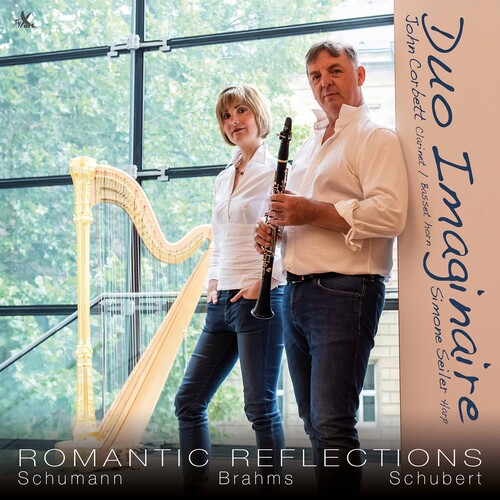Show results for
Deals
- 4K Ultra HD Sale
- Action Sale
- Alternative Rock Sale
- Anime sale
- Award Winners Sale
- Bear Family Sale
- Blu ray Sale
- Blues on Sale
- British Sale
- Classical Music Sale
- Comedy Music Sale
- Comedy Sale
- Country Sale
- Criterion Sale
- Electronic Music sale
- Fantasy Film and TV
- Folk Music Sale
- Hard Rock and Metal Sale
- Horror Sci fi Sale
- Jazz Sale
- Kids and Family Music sale
- Kids and Family Sale
- Metal Sale
- Music Video Sale
- Musicals on Sale
- Mystery Sale
- Naxos Label Sale
- Olive Films on Sale
- Page to Screen Sale
- Paramount Sale
- Pop and Power Pop
- Rap and Hip Hop Sale
- Reggae Sale
- Rock and Pop Sale
- Rock Legends
- Soul Music Sale
- TV Sale
- TV Sale
- Vinyl on Sale
- War Films and Westerns on Sale

Romantic Reflections
- Format: CD
- Release Date: 1/17/2020

Romantic Reflections
- Format: CD
- Release Date: 1/17/2020
- Composers: Brahms Schubert Schumann
- Label: Tyxart
- UPC: 4250702801146
- Item #: 2252391X
- Genre: Classical
- Release Date: 1/17/2020

Product Notes
Great works always attract artists of many different instruments, and for good reason - it is only then that they are illuminated in their full scope. New sounds and colors enrich the original material. The unusual combination of clarinet/basset horn and harp reveals a powerful emotionality to the listener and, particularly in Brahms's Intermezzi, highlights complex chamber music qualities already concealed within the piano version. Transcriptions, to which this release is exclusively devoted, have never been uncommon. Since the original repertoire from this period for harp, both as a solo instrument and in chamber music works, is relatively limited, the literature for piano and for harpsichord holds a special appeal for harpists. In addition, it was a widespread practice with duo pieces at that time to print the piano part in an alternative version for harp. Due to technical limitations, many composers found no use for the harp. This changed, however, at the beginning of the nineteenth century when the piano and harp manufacturer Sébastien Érard invented the double-action mechanism, which made it possible to play in any key - just in time to avoid missing out on the increasingly chromatic music of the Romantic period. But the harp was not the only instrument that enjoyed it's heyday during Romanticism; it was during this era that the clarinet, too, flourished for the first time. Likewise, in the early nineteenth century, Iwan Müller designed the "Clarinette Omnitonique," an instrument with thirteen keys; thanks to this innovation, the clarinet was now also able to play in every tonality. The clarinet is considered to be the wind instrument that comes closest to the human voice. Hector Berlioz praises it for it's "beautiful instrumental soprano" and "a middle register that is favorable to the expression of the most poetic feelings and ideas." (Grand traité d'instrumentation et d'orchestration modernes).

